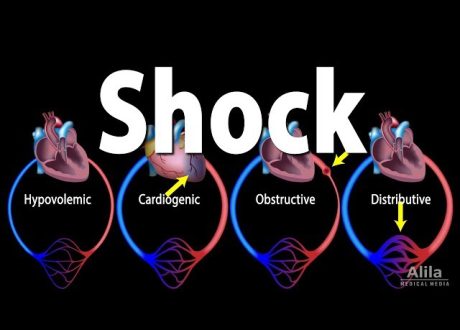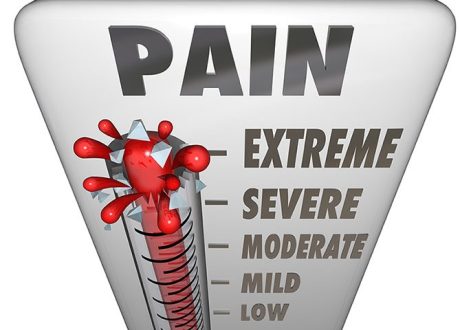Eden Bernstein, MD; Tracy Y. Wang, MD, MHS, MSc
Point-of-care ultrasonography (POCUS) is the use of ultrasonography by clinicians to augment the physical examination and guide clinical decision-making at the bedside.1,2 It has become the standard of care for most common bedside procedures. However, while endorsed by the American College of Physicians and the Society of Hospital Medicine, its use for diagnostic purposes is not as firmly grounded in evidence demonstrating net benefit on patient outcomes.1,3
The enthusiasm surrounding POCUS is not surprising given several perceived advantages. Its convenience may empower clinician decision-making with less dependence on formal imaging studies, particularly those that require cumbersome patient transportation, might not have around-the-clock availability, or are infeasible in certain resource-limited settings.4,5 Clinicians express satisfaction with POCUS use to more quickly narrow the list of differential diagnoses, augment the physical examination with more visual data, and even generate excitement around bedside medicine.6 Emergency medicine clinicians often use POCUS to direct consultations and patient disposition. POCUS has also been associated with improvements in shared decision-making and patient satisfaction scores.7,8
With advances in technology, handheld ultrasonography devices have become increasingly affordable and used. The current clinical applications of POCUS are guided by studies that established its diagnostic accuracy compared with criterion-standard diagnostic testing. For example, POCUS has a sensitivity of greater than 90% for the detection of pleural effusions when using computed tomography as the criterion standard.9 POCUS is often used for this indication because it has a higher sensitivity than radiography, but it is not clear whether identifying small pleural effusions that are missed with radiography offers clinical benefit.9 Conversely, POCUS has poor sensitivity for detecting kidney calculi and therefore should not be used to rule out nephrolithiasis.10 POCUS has demonstrated favorable testing parameters for the detection of cardiac, pulmonary, abdominal, and vascular pathologies in the inpatient setting, thereby shortening time to diagnosis.11
Yet many unanswered questions remain with regard to its use. Understanding the clinical benefit of POCUS use is challenged by the fact that these examinations are often performed without formal documentation, and images may not be easily accessed for quality assurance and retrospective analysis. Very few trials have examined meaningful clinical outcomes related to POCUS or even indirect clinical outcomes, such as time to treatment initiation, avoidance of transfer to a higher level of care, or length of stay. Clinical outcomes resulting from delayed or missed diagnosis that could be improved by POCUS use are important to study. One example could be the patient with undifferentiated shock in which targeted ultrasonography findings might guide resuscitative efforts (eg, fluids vs vasopressor support) and the need for therapeutic procedural interventions (eg, pericardiocentesis or targeted thrombolysis). One of the largest randomized clinical trials in this area did not demonstrate a meaningful benefit of POCUS for a variety of clinical end points, including 30-day mortality.12 It is also important to note that few imaging modalities have demonstrated an improvement in mortality, and, while important to study, this outcome may not independently serve as a useful litmus test for the utility of POCUS. Because POCUS, by definition, does not have to be performed by imaging experts, more data are needed to characterize interclinician variability in acquisition or interpretation of findings. These data are needed to shape training requirements for POCUS use because currently, POCUS can be used by clinicians with little or no training in imaging. Importantly, data on downstream adverse consequences of POCUS are virtually nonexistent. We do not know the degree to which false-positive findings occur in practice and how often they lead to unnecessary testing or treatments that potentially worsen patient outcomes.
Therefore, although already increasing in use, POCUS demands rigorously designed trials. In situations where clinical use is growing, equipoise might be lacking for patient-level or even clinician-level randomization. Implementation research approaches, such as a stepped-wedge trial design, might be more acceptable by preserving the rigor of randomization while allowing all clinicians to eventually use POCUS when needed or preferred. Standard training of clinicians would include education on when a POCUS examination could help guide management based on perceived pretest probability, as well as technical skills for image acquisition and interpretation targeted to those who are not imaging specialists. While preserving the intent of POCUS use to guide bedside clinical decision-making without expert interpretation of images, early studies might need some redundancy with repeated formal ultrasonography imaging to confirm findings. One might argue for a “core laboratory” type of approach in which POCUS images are saved for review by an expert third party at a later date to assess image quality, adequacy of image acquisition to draw reliable conclusions, and accuracy of interpretation. Because there are no universally recognized standards for accreditation or credentialing, there is likely wide variation in skill level and training among POCUS users. Given the rapid evolution of this bedside technology and increasing interest in use, data to reassure us that POCUS is consistently deployed and produces meaningful clinical benefit are urgently needed. Additional data on safety outcomes, such as misdiagnosis and burden of downstream testing as a result of POCUS use, will complement benefit-risk assessments and cost-effectiveness analyses guiding future use.
There is no doubt that POCUS use is viscerally satisfying and appeals to the clinician taking care of patients whose bedside history and physical examination cannot convey a clear diagnosis. Studies to date have largely been aimed at establishing the diagnostic utility of POCUS. We recommend making POCUS use more evidence-based by focusing research efforts on assessing the role of POCUS in patient treatment and clinical outcomes.










